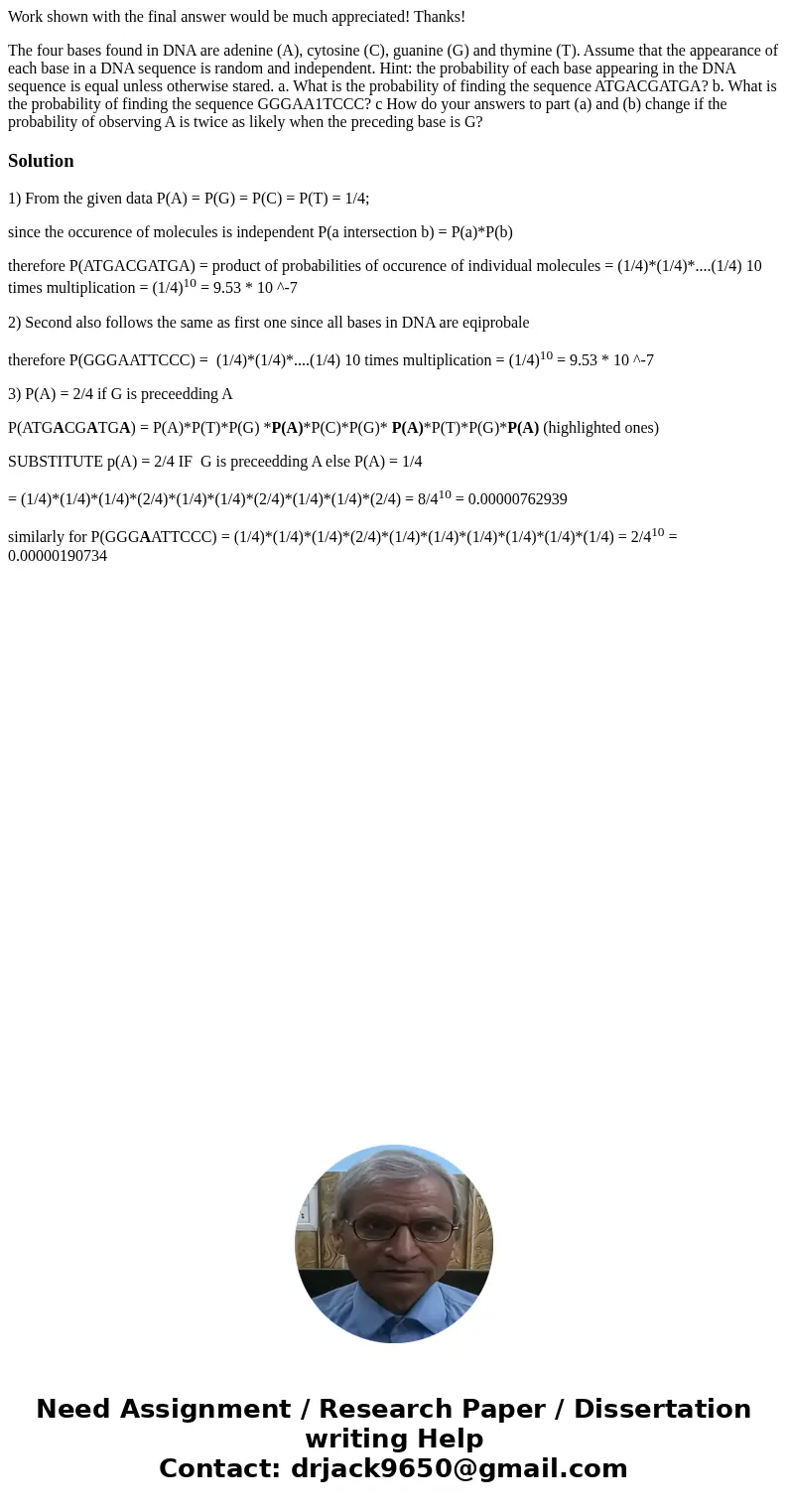Work shown with the final answer would be much appreciated T
Work shown with the final answer would be much appreciated! Thanks!
The four bases found in DNA are adenine (A), cytosine (C), guanine (G) and thymine (T). Assume that the appearance of each base in a DNA sequence is random and independent. Hint: the probability of each base appearing in the DNA sequence is equal unless otherwise stared. a. What is the probability of finding the sequence ATGACGATGA? b. What is the probability of finding the sequence GGGAA1TCCC? c How do your answers to part (a) and (b) change if the probability of observing A is twice as likely when the preceding base is G?Solution
1) From the given data P(A) = P(G) = P(C) = P(T) = 1/4;
since the occurence of molecules is independent P(a intersection b) = P(a)*P(b)
therefore P(ATGACGATGA) = product of probabilities of occurence of individual molecules = (1/4)*(1/4)*....(1/4) 10 times multiplication = (1/4)10 = 9.53 * 10 ^-7
2) Second also follows the same as first one since all bases in DNA are eqiprobale
therefore P(GGGAATTCCC) = (1/4)*(1/4)*....(1/4) 10 times multiplication = (1/4)10 = 9.53 * 10 ^-7
3) P(A) = 2/4 if G is preceedding A
P(ATGACGATGA) = P(A)*P(T)*P(G) *P(A)*P(C)*P(G)* P(A)*P(T)*P(G)*P(A) (highlighted ones)
SUBSTITUTE p(A) = 2/4 IF G is preceedding A else P(A) = 1/4
= (1/4)*(1/4)*(1/4)*(2/4)*(1/4)*(1/4)*(2/4)*(1/4)*(1/4)*(2/4) = 8/410 = 0.00000762939
similarly for P(GGGAATTCCC) = (1/4)*(1/4)*(1/4)*(2/4)*(1/4)*(1/4)*(1/4)*(1/4)*(1/4)*(1/4) = 2/410 = 0.00000190734

 Homework Sourse
Homework Sourse